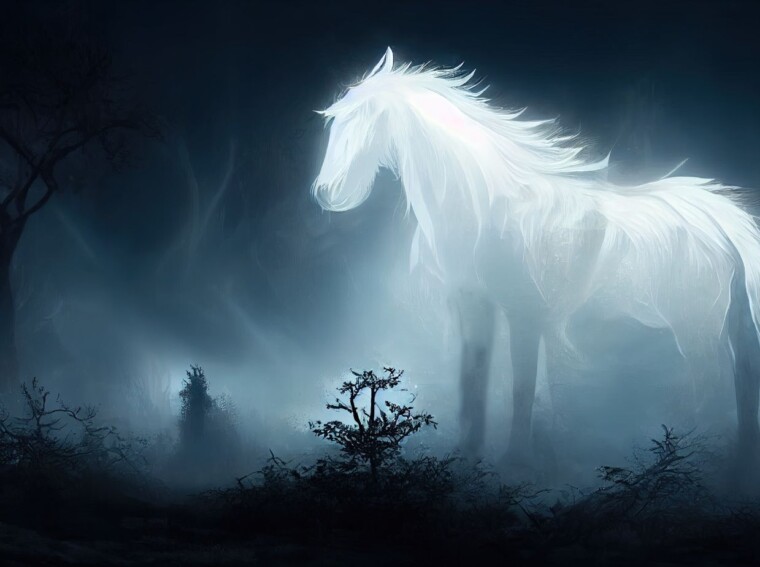If you are an avid Dungeons and Dragons fan and an aspiring writer, you know how important it is to create a captivating world for your readers. One way to achieve this is by including fascinating creatures in your book. In this article, we will explore 10 amazing Dungeons and Dragons creatures that you must include in your book. These creatures will add depth, excitement, and intrigue to your storytelling, making your book a must-read for fans of the genre.
Unleash The Power of Mythical Creatures in Your Book
Mythical creatures have always captured the imagination of readers. From mighty dragons to mysterious unicorns, these creatures bring a sense of wonder and awe to any story. By including them in your book, you can tap into the readers’ fascination with the fantastical and create a world that is both familiar and extraordinary.
Here are three mythical creatures that you can unleash in your book:
- Dragons: Dragons are iconic creatures in the Dungeons and Dragons universe. Their immense power, intelligence, and ability to breathe fire make them formidable adversaries or allies for your characters. Whether you choose to portray them as majestic protectors of ancient treasures or fearsome beasts wreaking havoc, dragons will undoubtedly captivate your readers.
- Unicorns: Unicorns are known for their purity and grace. These magical creatures can add a touch of enchantment to your book. Whether they are guiding the protagonist on a quest or serving as symbols of hope and goodness, unicorns will evoke a sense of wonder in your readers.
- Sphinxes: Sphinxes are creatures of riddles and wisdom. With their enigmatic nature and inscrutable motives, they can add an element of mystery and intrigue to your storyline. Sphinxes can serve as guardians of ancient knowledge or as enigmatic allies whose true intentions are shrouded in secrecy.
Discover The Most Fascinating Creatures in The D&D Universe
The Dungeons and Dragons universe is teeming with a vast array of captivating creatures. From fearsome monsters to curious beings, there is no shortage of inspiration for your book. Here are three creatures that you should consider including:
- Beholders: Beholders are bizarre and powerful creatures with a spherical body, a large central eye, and numerous smaller eyes on stalks. These creatures possess a wide range of magical abilities and are known for their paranoia and xenophobia. Including beholders in your book will add a sense of danger and unpredictability to your world.
- Mind Flayers: Mind Flayers, also known as Illithids, are humanoid creatures with octopus-like heads. They possess powerful psychic abilities and feed on the brains of other creatures. These sinister beings can serve as formidable antagonists in your book, with their mind-control abilities and insatiable hunger for knowledge and power.
- Elementals: Elementals are beings made up of the elemental forces of nature. From fiery efreet to watery marids, these creatures embody the raw power of the elements. Including elementals in your book will allow you to explore the dynamic interplay between nature and magic.
Create an Immersive World With These Fantastical Creatures
When crafting a book set in the Dungeons and Dragons universe, it is crucial to create an immersive world that feels alive and vibrant. Including fantastical creatures can help you achieve this by adding depth and richness to your setting. Here are three creatures that can enhance the immersive experience for your readers:
- Goblins: Goblins are small, mischievous creatures that often serve as minions or foot soldiers for more powerful adversaries. Including goblins in your book can add an element of chaos and unpredictability to your world. Whether they are causing trouble for the protagonist or being manipulated by a greater evil, dice goblin uk will keep your readers on their toes.
- Treants: Treants are ancient tree-like beings that embody the spirit of nature. These wise and powerful creatures can serve as guardians of the forest or wise mentors for your characters. Including treants in your book will allow you to explore themes of environmentalism and the interconnectedness of all living things.
- Medusas: Medusas are humanoid creatures with snakes for hair and the ability to turn others to stone with a single glance. These fearsome creatures can add a sense of danger and trepidation to your book. Whether the protagonist must face a medusa in a deadly encounter or navigate a labyrinth filled with petrified victims, medusas will create a thrilling and suspenseful atmosphere.
Get Inspired by The Diverse Range of Creatures For Your Book
The Dungeons and Dragons universe offers a diverse range of creatures to inspire your storytelling. Each creature brings a unique set of abilities, characteristics, and lore, allowing you to create a world that is rich and multi-dimensional. Here are three creatures that can serve as a source of inspiration for your book:
- Centaur: Centaurs are half-human, half-horse beings known for their strength and archery skills. These noble creatures can add a sense of chivalry and honor to your book. Whether they are allies or rivals of the protagonist, centaurs will bring a dynamic and engaging element to your story.
- Kobolds: Kobolds are small reptilian creatures known for their cunning and craftiness. Often seen as underdogs or comic relief, kobolds can surprise your readers with their resourcefulness and intelligence. Including kobolds in your book will add a touch of humor and unpredictability to your narrative.
- Gelatinous Cubes: Gelatinous cubes are amorphous, transparent cubes that lurk in dungeons, waiting to engulf unsuspecting adventurers. These creatures are slow-moving but highly dangerous, capable of dissolving anything they come into contact with. Including gelatinous cubes in your book will create a sense of claustrophobia and suspense, as characters must navigate treacherous dungeons filled with these deadly hazards.

Bring Your Storytelling to Life With These Incredible Creatures
As a writer, your goal is to bring your storytelling to life and create an unforgettable experience for your readers. Including incredible creatures in your book can help you achieve this by adding excitement, tension, and emotional depth to your narrative. Here are three creatures that will enhance your storytelling:
- Phoenixes: Phoenixes are majestic birds associated with fire and rebirth. These mythical creatures can symbolize hope, resurrection, and the cycle of life. Including phoenixes in your book will allow you to explore themes of redemption and transformation, as characters rise from the ashes of their past.
- Werewolves: Werewolves are shape-shifting creatures that embody the duality of man and beast. These creatures can add an element of darkness and internal conflict to your book. Whether they are tragic figures struggling with their curse or ruthless predators terrorizing the night, werewolves will evoke a range of emotions in your readers.
- Sirens: Sirens are seductive creatures with enchanting voices that lure sailors to their doom. These alluring beings can add a sense of danger and temptation to your book. Whether the protagonist must resist the siren’s song or succumb to its irresistible allure, sirens will create a captivating and suspenseful storyline.
Make Your Book a Must-Read With These Mesmerizing Creatures
By including mesmerizing creatures in your book, you can make it a must-read for fans of the Dungeons and Dragons genre. These creatures will not only captivate your readers but also add depth and complexity to your storytelling. Here are three creatures that will make your book stand out:
- Demons: Demons are malevolent beings from the Abyss, known for their cruelty and thirst for power. Including demons in your book will create a sense of epic conflict and high stakes. Whether the protagonist must face a powerful demon lord or navigate the treacherous politics of the Abyss, demons will add an element of darkness and danger to your narrative.
- Genies: Genies are powerful beings tied to the elemental planes. These wish-granting entities can add a sense of wonder and magic to your book. Whether they are allies or adversaries, genies will bring a touch of the mystical to your storytelling.
- Dragons: Dragons are iconic creatures in the Dungeons and Dragons universe. Their majestic presence, awe-inspiring power, and intricate lore make them a must-have for any book set in this world. Whether they are the main antagonist or allies that aid the protagonist on their quest, dragons will make your book an unforgettable experience for your readers.

Expert Advice on Dungeons and Dragons Creatures Book
When it comes to including Dungeons and Dragons creatures in your book, here is some expert advice to help you make the most of these fantastical beings:
- Research and understand the lore: Take the time to delve into the lore surrounding each creature. This will not only help you stay true to the Dungeons and Dragons universe but also give you insights into their characteristics, motivations, and interactions with other creatures.
- Create unique twists: While it’s important to stay true to the core characteristics of each creature, don’t be afraid to add your own unique twists. This will make your creatures stand out and surprise your readers.
- Consider the role of creatures in your narrative: Think about how each creature contributes to your overall storyline. Whether they serve as allies, adversaries, or symbols, make sure their presence has a purpose and advances your narrative.
- Balance familiarity and originality: While including iconic creatures like dragons can be exciting, don’t forget to include lesser-known creatures as well. This will add a sense of discovery and keep your readers engaged.
- Use creatures to explore themes and symbolism: Creatures can be powerful symbols and metaphors. Use them to explore themes such as power, identity, and the balance between good and evil.
- Immerse yourself in the Dungeons and Dragons community: Connect with other fans, join online forums, and participate in discussions. This will not only expand your knowledge but also provide valuable insights and feedback on your creatures.
Frequently Asked Questions About Dungeons and Dragons Creatures Book
Q: Can I create my own creatures for my Dungeons and Dragons book?
A: Absolutely! While it’s important to stay true to the existing lore and creatures of the Dungeons and Dragons universe, you have the creative freedom to invent your own creatures. Just make sure they fit seamlessly into the world and enhance your storytelling.
Q: How can I make my creatures unique and memorable?
A: To make your creatures stand out, consider their appearance, abilities, and motivations. Add unique characteristics, create engaging backstories, and give them distinct personalities. Additionally, think about how they interact with your main characters and the impact they have on the world you’ve created.
Q: Can I mix and match creatures from different editions of Dungeons and Dragons?
A: As a writer, you have the freedom to draw inspiration from different editions of Dungeons and Dragons. However, it’s important to ensure consistency and coherence within your book. If you decide to include creatures from various editions, make sure their abilities and characteristics align with the world you’ve established.
Q: How can I balance the presence of creatures with the development of my main characters?
A: The key is to strike a balance between the creatures and your main characters. Ensure that the creatures’ interactions with your characters contribute to their growth, challenges, and overall story arc. Use the creatures as catalysts for character development, rather than overshadowing the protagonist’s journey.
By including these amazing Dungeons and Dragons creatures in your book, you will create a captivating world that will leave readers eagerly turning the pages. So, unleash the power of mythical creatures, discover fascinating beings, and bring your storytelling to life with these incredible creatures!
